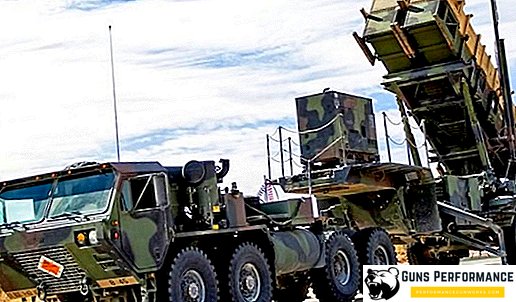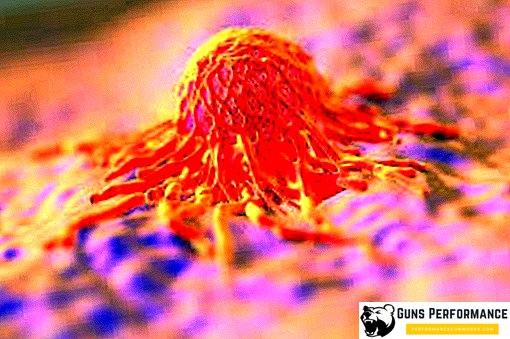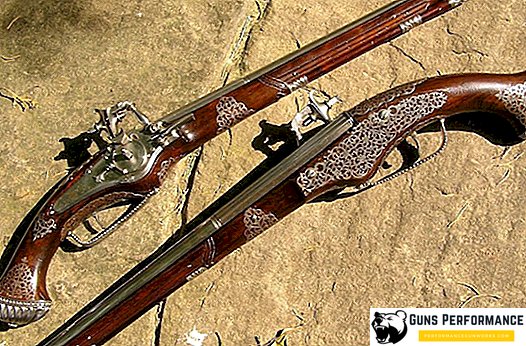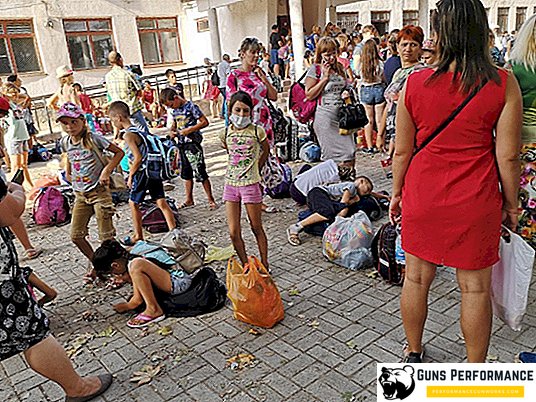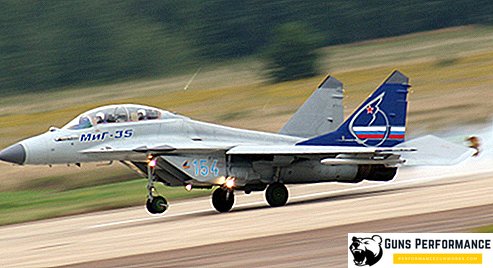The Republic of Belarus is a country in Eastern Europe that has close ties with Russia and has developed over the centuries. The Head of the Republic of Belarus is the guarantor of the country's constitution, the rights and freedoms of citizens, the Supreme Commander of the armed forces. Theoretically, any citizen of the republic can become president, as demonstrated in the last elections in 2015: one of the candidates was an unemployed woman. The head of state should not be a member of political parties, after the election the membership is automatically suspended. Currently, the post of the President of the Republic of Belarus is occupied by Alexander Lukashenko.
The first states in the territories of the modern Republic of Belarus

The first nomadic tribes appeared on the territory of the Republic of Belarus at the end of the III - beginning of the II millennium BC. These were the ancient Indo-European tribes, who became the ancestors of the Balts and Slavs. Mixed among themselves and with other tribes, they became the progenitors:
- Yatvyagov;
- Lithuania;
- Krivichy;
- Radimichi;
- Dregovichy.
Some scholars believe that the Gothic tribes participated in the formation of the Slavic peoples, but this is not proven.
In the 9th century, the Radimichi were conquered by Prince Oleg of Kiev, after which their lands became part of Kievan Rus. The main goal of Prince Oleg was to receive tribute, he tried to conquer as many tribes as possible. When Prince Oleg died, many tribes of the RadiMiches declared independence from Kiev, but in 984 the army of Vladimir Svyatoslavovich defeated the army of the former tributaries. The territories of the Radiches were again part of Kievan Rus. In the X century, Prince Vladimir of Kiev baptized his subjects. This century includes the development of the first principalities in the territory of modern Belarus:
- Polotsk;
- Turovsky;
- Minsky.
The main role among them was played by the principality of Polotsk, which had been fighting for power with the principality of Kiev for about 100 years. Prince Vladimir in 978 captured Polotsk. Despite this, until the XIII century the Polotsk princes collected tribute from the Baltic lands, carrying out independent expansion. In the XIII century, the Baltics came under the rule of the Crusaders.
Belarus as part of the Grand Duchy of Lithuania and the Commonwealth

In the period from the XIII to the XIV century, the Belarusian lands became part of the Grand Duchy of Lithuania (GDL). This contributed to the division of the ancient Russian nationality, since ON and Kievan Rus constantly fought among themselves. The opposition of the powers intensified after the emergence of the Russian centralized state in the XV century. Belarusian culture was distinguished by a high level of development, which was influenced by the links between VKL and Europe:
- In the years 1517-1525, Frantisek Skorina published the first East Slavic books;
- In the 16th century, 3 Statutes of the Grand Duchy of Lithuania were issued - the Belarusian version of classical European feudal law;
- From the 14th to the 16th centuries, cities and castles were built according to the European model throughout Belarus.
During the Livonian War of 1558-1583, Belarusian lands suffered greatly: many cities were completely destroyed, and the population decreased.
In the 16th century, ideas of reformation began to spread on the lands of the GDL, Protestant communities were based. In 1569, the Grand Duchy of Lithuania and the Kingdom of Poland united on the basis of union into a single state - Rzeczpospolita. In accordance with the decrees of the representatives of the Catholic Church, the Protestants began to be persecuted: their books were taken from them and deprived of land. Thanks to this policy, the main task of the Catholic Church to eradicate Protestantism was fully resolved by the middle of the seventeenth century.
XVII century - the time of Russian-Polish wars. Belarus suffered the most in the Russian-Polish war of 1654-1667. Besides the fact that a lot of fighting took place on the territory of the country, the anti-Polish uprising in Ukraine gradually spread here. By the end of the war, Russian troops seized the lands of the modern Republic of Belarus, but by agreement of 1667 they remained under the rule of the Commonwealth.
The Republic of Belarus as part of the Russian Empire and the USSR

At the end of the XVIII century, the Commonwealth experienced 3 sections. As a result of these events, the Belarusian lands joined the Russian Empire. The form of the economic system immediately changed - it was rebuilt according to the Russian model. Cheap "taverns" were built all over the country, the people used to drink in them. The nobility lost most of their privileges, and Russian government officials were in the highest state posts. Such reforms led to the gentry uprisings of 1831 and 1863-1864. A group of resolute nobles and part of the intelligentsia tried to restore the Grand Duchy of Lithuania.
At the beginning of the 20th century, the rise of the national liberation movement began in Belarus. The First World War turned out to be fatal for the country - the battles between the Russian and German troops took place on its territory. The peasants suffered from both the Germans and the Russians — everyone needed food. Army Kaiser Wilhelm II occupied the territory of the country.
After the revolution of 1917, Belarus was tried to be declared an independent republic:
- In December 1917, the First All-Belarusian Congress was held in Minsk. This congress was dispersed by the Bolsheviks;
- On February 21, the Bolsheviks fled in the run-up to the German takeover of Minsk, the Executive Committee of the Rada All-Belarusian Congress declared itself the sole legitimate authority in the region;
- On March 25, the country was under German occupation, the Republic of Belarus became an independent republic.
After the Germans left the country, the territory was occupied by the Red Army. On January 1, 1919, the Bolsheviks proclaimed the Soviet Socialist Republic of Belarus.
Since February 1919, another military conflict broke out on the territory of the Soviet Republic - the Soviet-Polish war:
- August 1919 - the Polish army captured Minsk;
- July 1920 - the Red Army recaptured the city;
- 1921 - the signing of the Soviet-Polish peace treaty, according to which the western part of Belarus was ceded to Poland.
The eastern part of the country was declared the Belarusian Soviet Socialist Republic (BSSR), which became part of the USSR on December 30, 1922.
During the reign of Stalin, numerous economic transformations were carried out on the territory of the Republic of Belarus:
- Industrialization;
- Collectivization;
- The formation of new industries and agriculture.
Along with the positive moments, there were a number of negative ones:
- Passed language reform, which strengthened the process of Russification;
- The best representatives of the Belarusian intelligentsia were shot;
- Tens of thousands of wealthy peasants have been repressed or exiled to Siberia.
In 1939, the territories of Western Belorussia were annexed to the BSSR after the defeat of Poland by German troops.
At the beginning of World War II, the republic was under the rule of the German fascist troops. The country turned into a partisan region, the rest of the military and the Bolsheviks led the resistance detachments. In 1943, the Belarussian Central Council was created - a self-government body that performed police and propaganda functions. In the summer of 1944, the Red Army liberated the republic. The German occupation and the war years destroyed more than 30% of the population of the BSSR.
The second half of the 1940s and 1950s became the period of renewal for the Republic of Belarus:
- The destroyed cities and settlements were restored;
- New factories and enterprises were built;
- Huge investments were made in the development of the education system and medical institutions.
In the early 1960s, the country became the "assembly shop" of the Soviet Union, which favorably affected the development of the BSSR economy until the beginning of perestroika.
Belarus in the late XX - early XXI century

The beginning of perestroika in the BSSR, as in most republics of the Soviet Union, is characterized by the formation of the national liberation movement. Initially, the emphasis was on obtaining extended autonomy, and subsequently - secession from the Soviet Union. Formation of the Belarusian independent state:
- In 1988, the Belarusian Popular Front (BNF) appears;
- In 1989 - the founding congress of the Belarusian Popular Front;
- In March 1990, the republican elections were held in the country, the Communist Party was able to remain in power;
- On July 27, 1990, the Supreme Council of the BSSR adopted the Declaration of State Sovereignty;
- On August 25, 1991, the country gained independence;
- On September 19, 1991, the BSSR officially became the Republic of Belarus.
In 1994, the Supreme Council adopted the first constitution of the Republic of Belarus. In July of the same year, a presidential election was held. The winner unexpectedly became Alexander Lukashenko, although the main contenders were Shushkevich, Kebich and Pozdnyak.
The Belarusian president was not satisfied with the restrictions in the constitution, so he initiated a referendum in 1996. The Supreme Council considered that the head of state grossly violated the constitution, and began to conduct the impeachment procedure. At that moment, the Russian delegation intervened, resolving the political crisis in the Republic of Belarus. The deputies and the president agreed that the results of the referendum would be advisory in nature, and the impeachment procedure would not continue.
After the referendum on November 24, 1996, Lukashenko violated the agreement, citing the fact that the voice of the people is above all agreements. The President dissolved the Supreme Council, forming a new parliament - the National Assembly. It consisted of all deputies of the Supreme Council loyal to the president. Thanks to the referendum, Lukashenka’s first presidential term was extended until 2001.
In 2001, the president was elected for a second term in a row. Before the elections, the representatives of the opposition were completely ousted from the bodies of state power. Although the functioning of parties was not prohibited, their members were deprived of the opportunity to hold public office. In 2004, a referendum was held in the Republic of Belarus, which abolished the provision of the constitution, which does not allow one person to hold the presidency for more than two consecutive terms. All subsequent elections in the country, Alexander Lukashenko won with a huge advantage.
How to become president of the Republic of Belarus?

A citizen who wants to be the head of state must meet the following parameters:
- Being Belarusian by birth;
- To reach the minimum age of 35 years;
- Constantly residing in the republic for at least 10 years before the election.
The president is elected for a five-year term and takes up his duties after the inauguration.
A presidential candidate must collect at least 100,000 signatures. Elections of the head of state are appointed by the House of Representatives. The term of appointment is not less than 5 months before the end of the powers of the previous head of state. The deadline is no less than 2 months before the end of presidential powers. If the post of the head of the republic remains vacant, the elections are held no less than 30 days and no later than 70 days after the opening of the vacancy.
The election of the president is considered to be held if at least 50% of the population of the country participate in the republican voting. The head of state is considered elected if at least 50% of voters vote for him.
Status and duties of the President of the Republic of Belarus

The Head of the Republic of Belarus has a number of duties enshrined in the country's constitution:
- Determination of the dates of the republican referendums;
- The appointment of elections to the Council of the Republic, the House of Representatives and local representative bodies. Elections can be both regular and extraordinary;
- Dissolution of parliament in cases stipulated by the Constitution of the Republic of Belarus;
- Appointment of members of the Central Commission for Elections and Referenda;
- Education and organization of work of the Administration of the President of the Republic of Belarus and other government bodies under the head of state;
- Approval of a candidate for prime minister. This procedure takes place only with the consent of the House of Representatives;
- Determining the structure of the government, appointment to office and the release of ministers, deputy ministers, members of the government;
- Deciding on the resignation of the Government and its members;
- Appointment to the post of Chairman of the Constitutional Court, the Supreme Court, the Supreme Economic Court. These procedures are carried out with the consent of the Council of the Republic;
- Appeals with annual messages to the citizens of the Republic of Belarus, informs them about the achievements, the main directions of foreign and domestic policy of the state;
- Participation in the work of the parliament of the republic, annual references to it. The right to speak at the parliament at any time;
- Chairmanship at meetings of the Government of the Republic (this is not a duty, but a right);
- Appointment of presidential representatives in the parliament of the republic, heads of government bodies;
- Decision on granting citizenship, political asylum;
- Establishing holidays and days, awarding state awards;
- Pardon prisoners;
- Conducting international negotiations, signing contracts.
The Head of the Republic of Belarus is the Supreme Commander-in-Chief of the armed forces, the presidential decrees are valid legislative acts.
Residences of the President of the Republic of Belarus

Currently, the President of the Republic of Belarus has several residences. The most luxurious of them is the Palace of Independence. The first official events began to be held in it since 2013. The residence is located on Pobediteley Avenue in the capital city of the city of Minsk. The area of the building is more than 50,000 square meters.
According to the leader of the Republic of Belarus, the construction of the residence used only materials produced in Belarus, but the builders claimed that even the nails were foreign. The Palace of Independence has more than a hundred different rooms. Here is the president’s reception room, although at one time, the Belarusian leader claimed that the Palace of Independence would not be the residence. In 2013, the inscription "Presidential Residence" appeared on the facade of the building. In the old building, on Marx 38 in Minsk, the administration of the head of state is now located, a hot line is working there.
The main residence of the Belarusian leader is the residence "Drozdy", located next to the reservoir of the same name. The huge building is a legacy of the Soviet era, it was built in the middle of the forest, and is reliably guarded by the military and the police from occasional visitors. Near the "Drozdov" there are several dozen large cottages that serve as a permanent residence for ministers and powerful businessmen.
The residence of the President "Drozdy" is a huge complex of fifty buildings for various purposes:
- Presidential home with an area of about 2,000 square meters;
- Two luxurious buildings next to the residence. Each has an area of 850 m2. Here are invited important foreign guests, presidents and ministers from other countries. At the same time, Lukashenko selectively approaches invitations, only the most important people can count on them;
- 30 residential cottages, which are often empty. Previously, they housed the ambassadors of foreign states evicted in 1998. Many believe that approximate officials live there, but their houses are a little further, behind the fence;
- Large sports complex with an area of 1,000 m2;
- 750 m2 swimming pool;
- Several baths for the rest of the president and his guests;
- Separate restaurant;
- Bar;
- Buffet;
- A large store with a wide range of products;
- Water deferrization station.
In general, there is everything you need to calmly hold out for a few months in case of an emergency.
Another well-known residence of Alexander Lukashenko is the Ozerny complex in Ostroshitsky Gorodok. Ранее здесь была дача советского маршала Тимошенко. Перед "заселением" президента здание было перестроено, а рядом появился комплекс из новых сооружений. Площадь комплекса составляет более 90 гектаров, главное здание трёхэтажное, общей площадью в 1 500 м2. В глаза бросается небольшой чайный домик и роскошный эллинг, расположенные на территории комплекса.
Республика Беларусь - страна в центре Европы. Несмотря на это, она считается одной из самых "советских" среди бывших республик СССР. Президента Республики Беларусь часто называют последним европейским диктатором, так как он постоянно выигрывает выборы с результатом более 80 %. Возможно, это говорит о любви белорусского народа к своему президенту, хотя в Европе утверждают, что выборы проводятся фиктивно.





